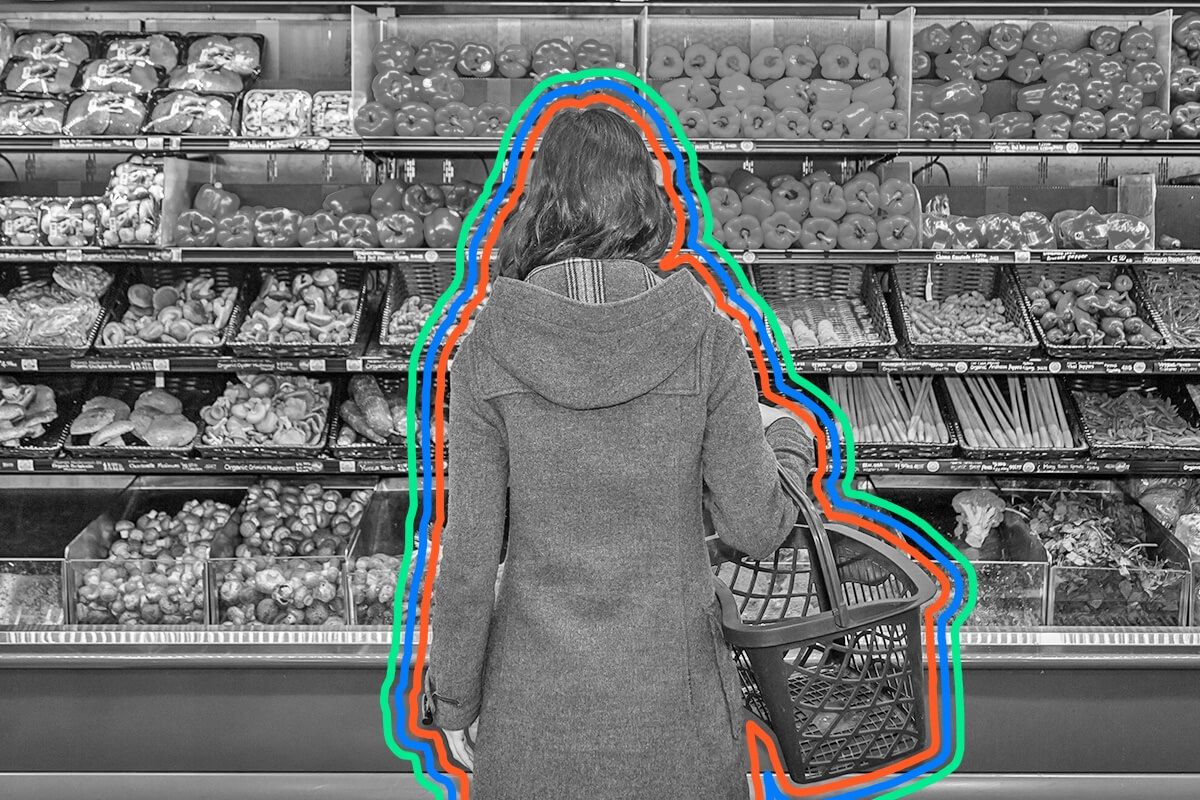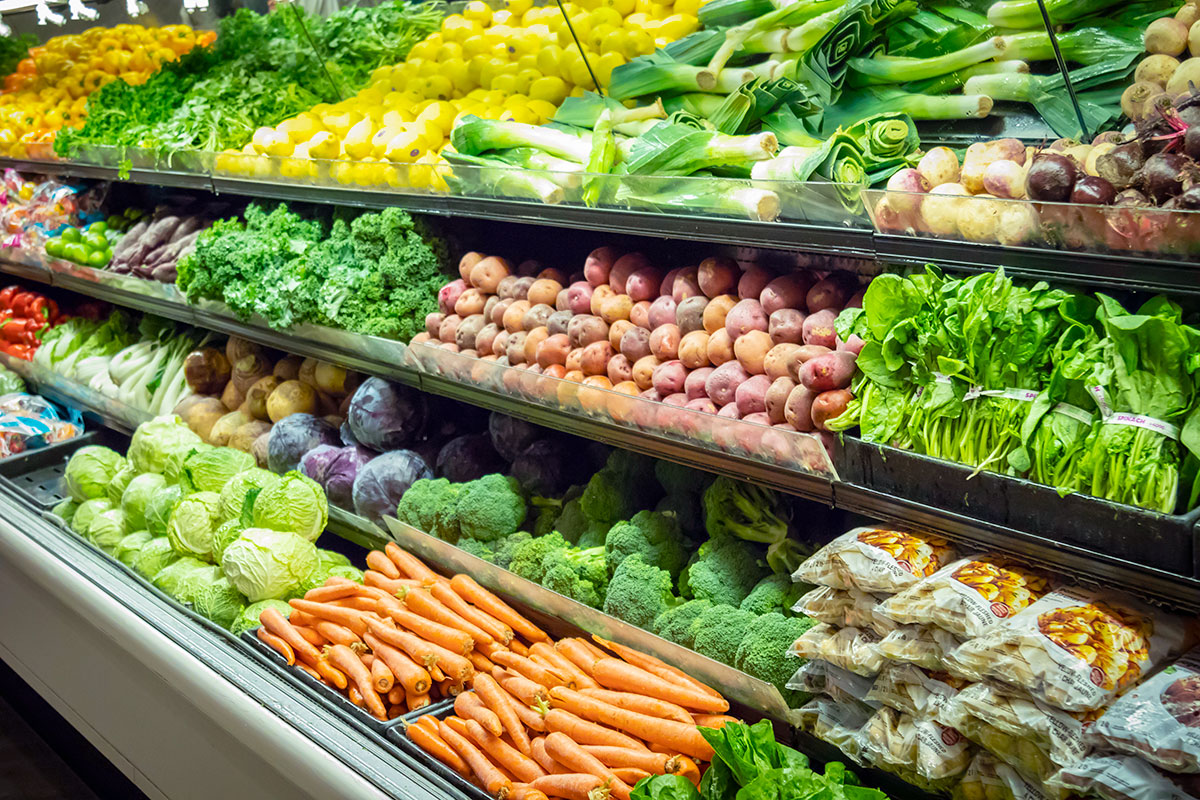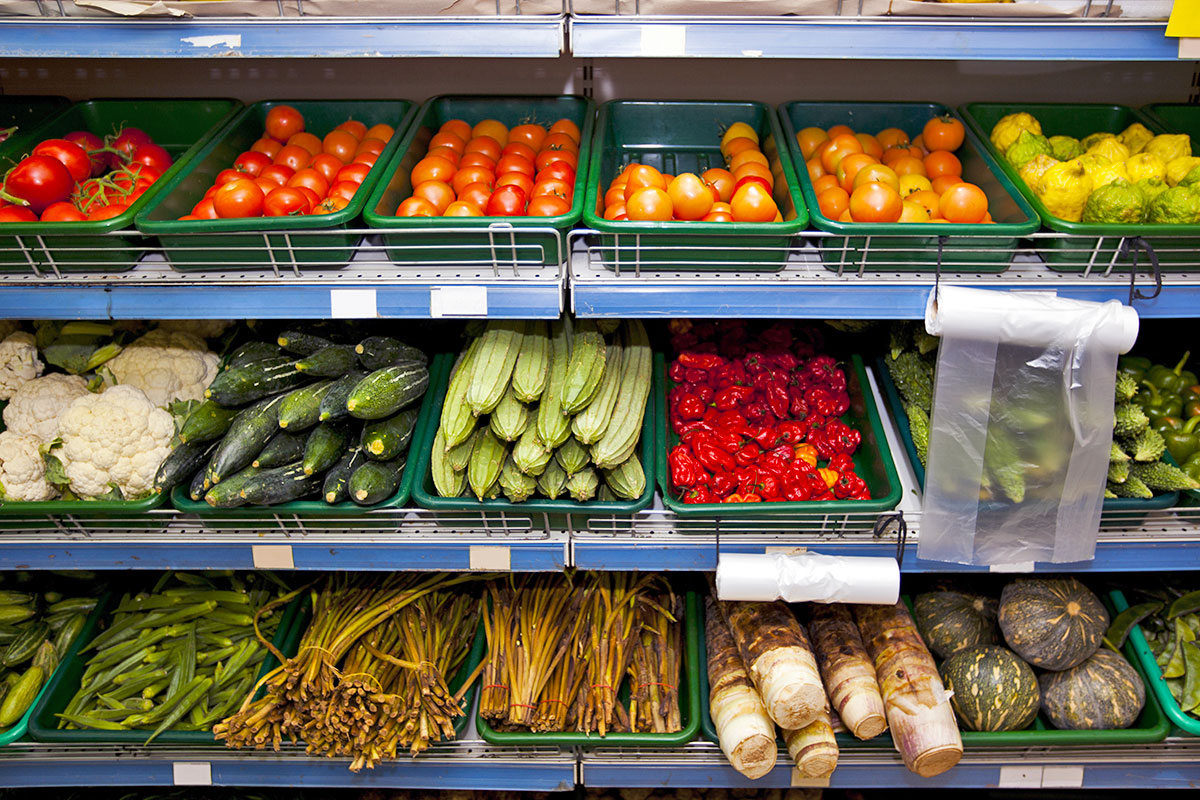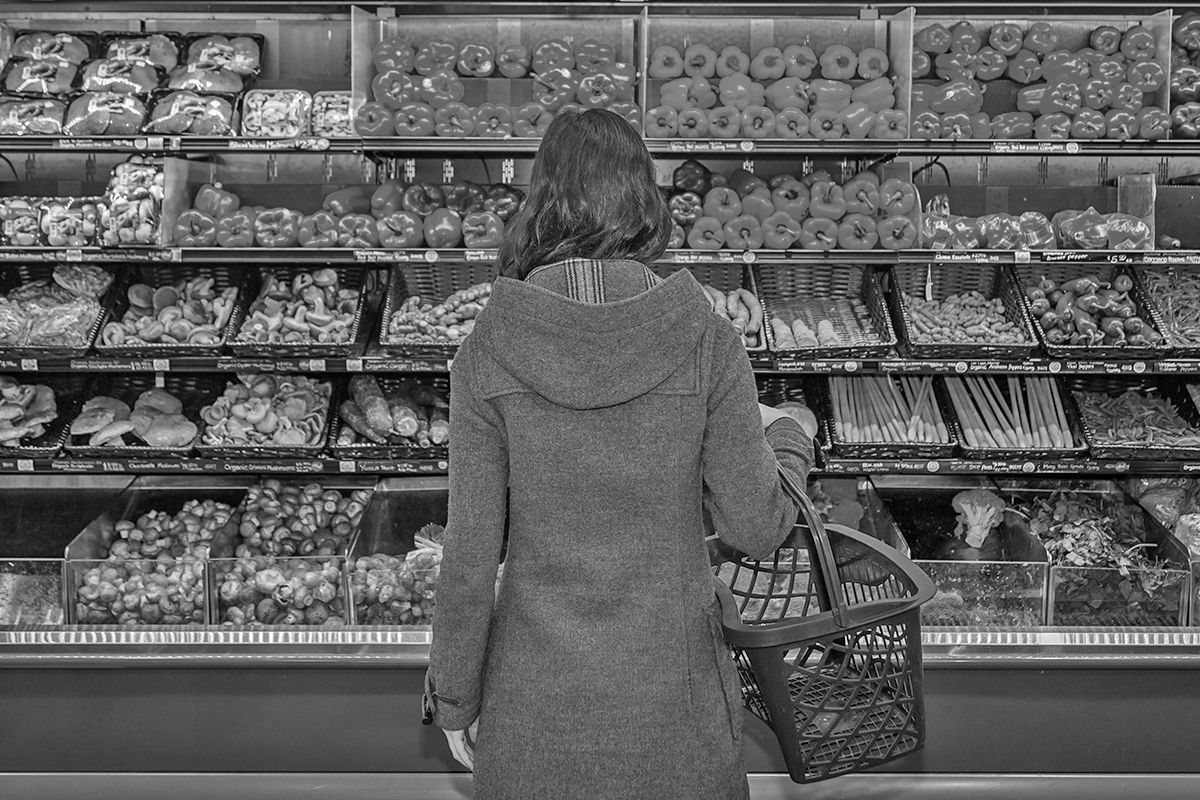

The typical American grocery store carries 40,000 to 50,000 items, including hundreds of fruits and vegetables. Those photogenic displays of dew-kissed leafy greens, pyramids of shiny apples, and baskets of sunny lemons are carefully organized, of course, to entice shoppers into purchasing them. Let’s investigate some secrets of the produce aisle below.
The Produce Aisle Is Strategically Placed in the Grocery Store

Imagine walking into your favorite grocery store. You push a cart through the automatic door, and bam — a wonderland of vibrant vegetables and fragrant fruits hits your senses. Displays of colorful produce at peak freshness are designed to entice shoppers and encourage spending, even if a consumer didn’t initially come into the store to buy bananas or Brussels sprouts. Produce aisles — which, these days, can be more like smorgasbords of fruits, veg, flowers, salad dressings, fresh juices, and more — employ flattering lighting and pleasant music to whet customers’ appetites and prime them for more shopping throughout the store.
“Local” Produce Might Come From Hundreds of Miles Away

According to a 2017 study by the Food Marketing Institute, 54% of shoppers want a large selection of locally grown produce in their grocery stores. The USDA doesn’t have a set definition for what “local” means in terms of miles, though, so grocery store chains have devised their own. In 2018, ABC10 in Sacramento surveyed several chains operating in Northern California and found widely varying radii: Safeway considers produce grown and packaged in the state to be “local,” Sprouts Farmers Market pegs its definition to produce grown in state or within 500 miles of a store, and Raley’s said that produce tagged with a “living local” label had been grown within 50 miles of the location.
Cooking Demos, Salad Bars, and Pineapple Corers Helped Popularize the Produce Section

In the early 1970s, produce sections accounted for only 3% of space in mom-and-pop grocery stores. Fresh fruits and vegetables were considered specialty items instead of an essential food group. After concluding that there was a communication breakdown between fruit and vegetable producers and consumers, grocery managers launched campaigns to educate shoppers about their products, complete with cooking demonstrations, free samples, and salad bars in the produce aisles. Displays of pineapple corers and other tools were positioned near the fresh items, demystifying the prep involved with buying and eating produce. By 1993, the average grocery store carried around 250 different produce types (up from 100 in 1980), fresh fruit and vegetable consumption had increased, and produce aisles contributed 20% of stores’ net profits.
Flowers Are Placed in the Produce Aisle for a Specific Reason

Cut flowers and potted plants are commonly placed in the produce aisle for the same reason that the aisles are positioned in the front sections of grocery stores: They reinforce consumers’ perception of freshness. Flowers introduce color, texture, fragrance, and beauty to shoppers as soon as they walk through the doors. That makes shoppers more likely to associate freshness and desirability with the other items in the store — even things that are canned or frozen — and feel encouraged to buy additional products.
The Freshest Produce Is at the Back of the Display

Have you ever moved a piece of fruit to the front of your fridge so you eat it before it rots? The same technique is at work in the produce aisle. Managers frequently rotate the fruit or veggies in the displays so that older items are brought to the front, a system dubbed FEFO (for “first expired, first out of the store”). The arrangement encourages shoppers to buy the older bananas or boxes of blueberries, which translates to less waste and higher profits for the store. Thus, it pays to reach to the back of the bags of spinach or piles of pears to glean the freshest and most flavorful specimens. Another tip: Produce deliveries usually arrive in the middle of the week, so if your favorite store gets shipments on Tuesdays, for example, you’ll find the freshest foods on Wednesdays.
Bananas Should Be Yellow, but Not Just Any Yellow

The bananas you see at the grocery store are Cavendish bananas — a cultivar that the banana industry adopted in the 1950s after a tropical fungus wiped out an earlier variety. Growers produce more than 60.6 million tons of Cavendish bananas every year for export all over the world. The bananas are prized for their sweetness, creamy texture, and appealing bright-yellow skin.
Stores buy unripe green bananas from growers so that by the time the fruit hits grocery store shelves, it has ripened to its more well-known yellow shade. Marketing expert Martin Lindstrom has written that bananas matching Pantone 12-0752 TPX Buttercup — a warm, inviting yellow — tend to sell better than bananas in Pantone 13-0858 TCX Vibrant Yellow, just one shade cooler.
Misting Produce Is a Clever Way To Make You Buy More

Many grocery stores display produce in open cases fitted with tiny jets to periodically bathe the veggies in a cool mist. (Some supermarkets even pipe in the sound of thundering rain to add to the rainy vibe.) The purpose behind misting is not to keep produce clean or extend its shelf life — it’s a clever way for grocers to make the fruits and vegetables look fresher and healthier so consumers purchase more. Water clinging to leafy greens also adds weight, which increases revenue for the store when vegetables are sold by the pound.
Ironically, misting actually shortens produce’s shelf life because water allows bacteria and mold to take hold. Misted veggies will likely not last as long in your fridge as those that weren’t misted in the produce aisle — which is another, perhaps sneakier, way to get you to buy produce more often.
Brussels Sprouts, Broccoli, and Kale Are All Subspecies of the Same Plant

A surprising number of veggies in the produce aisle are the same species, Brassica oleracea — but you wouldn’t know it by looking at them. Brussels sprouts, broccoli, cauliflower, kale, collard greens, purple and green cabbage, and kohlrabi are all domesticated cultivars of wild cabbage, a plant native to western and southern Europe. For the last few thousand years, farmers have selectively bred the wild plant to augment some part of its form, such as the leaves, buds, or stems. Today, each cultivar is classified as a subspecies of B. oleracea.
Some Popular Nuts Are Not Actually Nuts

Botanically speaking, a nut is a fruit with a hard shell containing a single seed. The true nuts you might encounter in the produce aisle include hazelnuts and chestnuts. Many of the products sold as “culinary nuts” belong to other botanical classifications. Cashews, almonds, and pistachios are known as “drupes,” a type of fruit with thin skin and a pit containing the seed. (Peaches, mangos, cherries, and olives are also drupes.) And the jury is still out on whether walnuts and pecans fall into the nut or drupe category since they have characteristics of both. Some botanists call them drupaceous nuts.
The Produce Industry Has a Special Lingo

Like any business, the produce industry has its own slang, describing everything from a cosmetic flaw in a tomato (“catfacing”) to the practice of hiding some less-than-ideal specimens in a box of otherwise fresh fruit (“stovepiping”). In produce slang, veggies “with legs” are those that have a longer shelf life than those that require special handling and rotation on the display. A flawless fruit, whether it’s a peach, pear, or pineapple, is a “diamond.” A quality cantaloupe will exhibit a “full slip” on the blossom end, meaning it separated easily from the vine when it was picked, indicating the best flavor.
